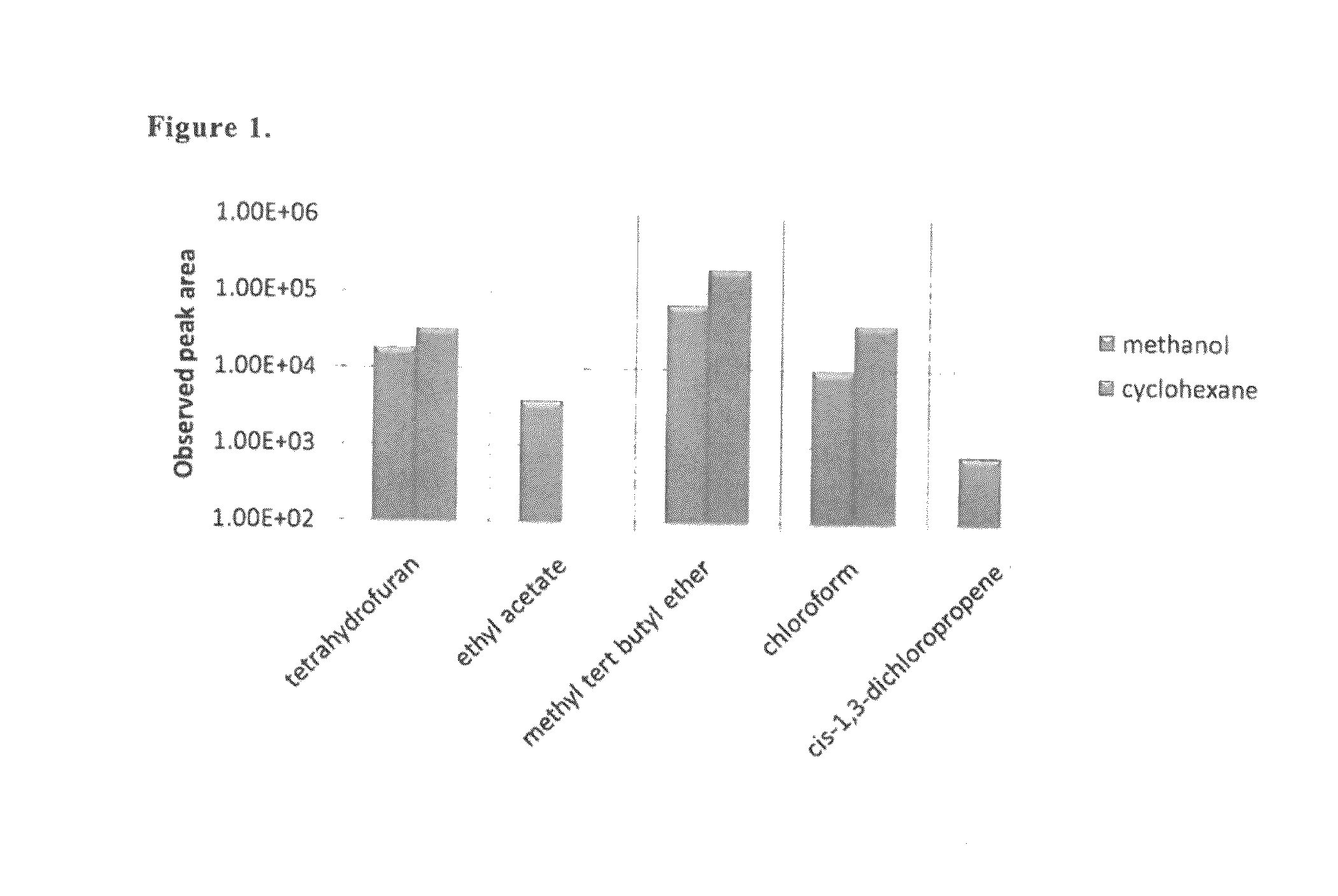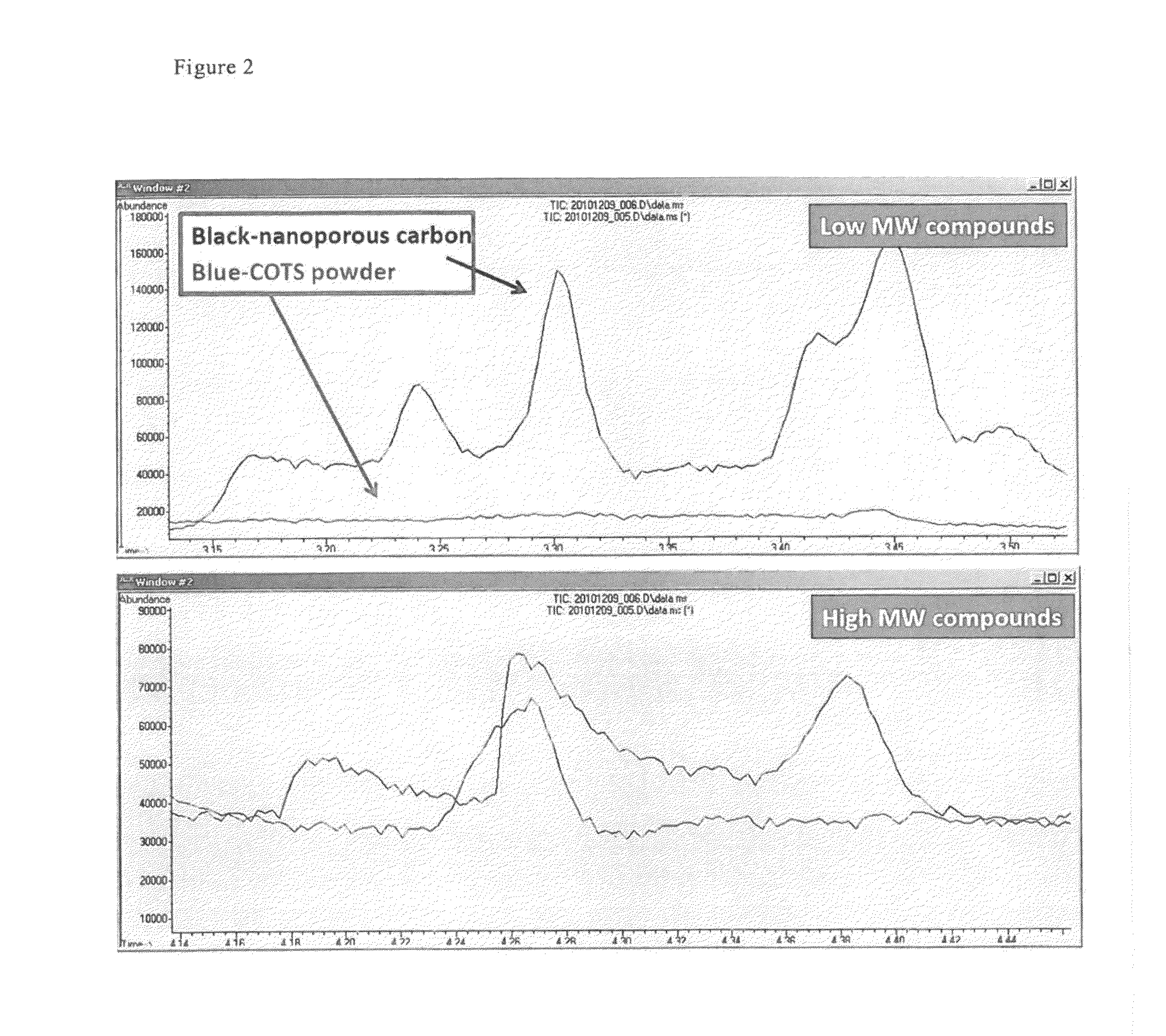Trace analyte extraction using adsorptive carbide-derived nanoporous carbon powders
a technology of nanoporous carbon powder and carbide, which is applied in the field of extraction and chemical separation, liquid chromatography or batch analyte extraction procedures, can solve the problems of limiting the purity of the end product, broad or overlapping chemical elution profiles, and insufficient chemical separation, so as to increase the total efficiency of liquid chromatography, reduce the width of elution peak width, and increase the peak separation
- Summary
- Abstract
- Description
- Claims
- Application Information
AI Technical Summary
Benefits of technology
Problems solved by technology
Method used
Image
Examples
Embodiment Construction
[0022]FIG. 1 is a graphical representation of some general embodiments of the invention utilizing simple polar and nonpolar solvents. These embodiments utilized ultra-fine nanoporous carbide derived carbon hydrophobic powder that adheres to deposited body oils and waxes and readily adsorbs chemicals to capture a wide variety of chemical analytes ranging from 10 to 100 ppb. However, as the graph indicates, instead of thermal desorption of the exposed nanoporous carbon material, the carbide derived carbon was subjected to either a polar (methanol) or non-polar (cyclochexane) solvent for five minutes. The solvent was then filtered injected (10 μL) into a CIS 4 coupled to an Agilent 6890 GC / 5975 MS.
[0023]FIG. 1 shows a graph representing the selective extraction of analytes from nanoporous carbon via liquid solvent extraction. These results also show that selective analytes can be removed from nanoporous carbon by varying the type of solvent used during extraction.
[0024]Another general ...
PUM
| Property | Measurement | Unit |
|---|---|---|
| mean nanopore diameter | aaaaa | aaaaa |
| particle size | aaaaa | aaaaa |
| particle size | aaaaa | aaaaa |
Abstract
Description
Claims
Application Information
 Login to View More
Login to View More - R&D
- Intellectual Property
- Life Sciences
- Materials
- Tech Scout
- Unparalleled Data Quality
- Higher Quality Content
- 60% Fewer Hallucinations
Browse by: Latest US Patents, China's latest patents, Technical Efficacy Thesaurus, Application Domain, Technology Topic, Popular Technical Reports.
© 2025 PatSnap. All rights reserved.Legal|Privacy policy|Modern Slavery Act Transparency Statement|Sitemap|About US| Contact US: help@patsnap.com



